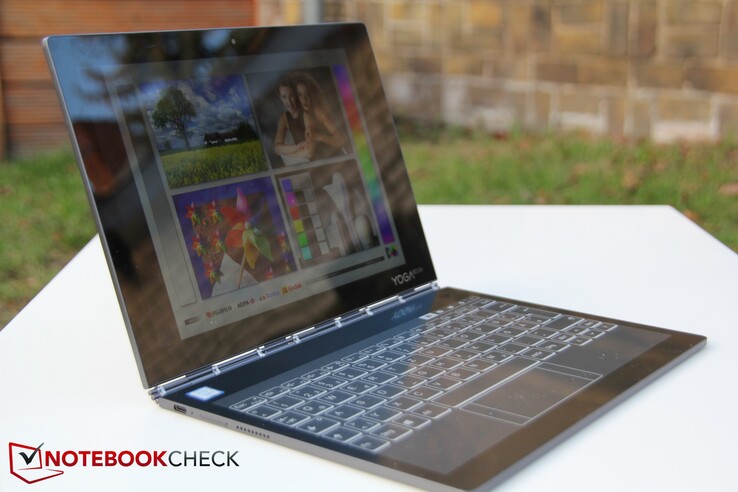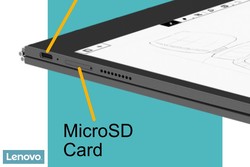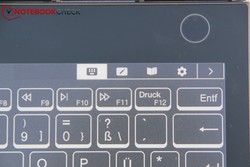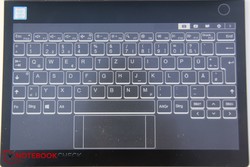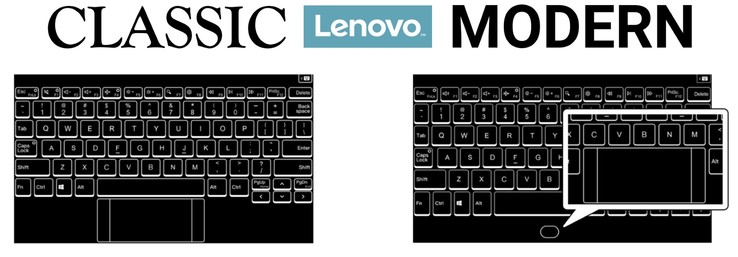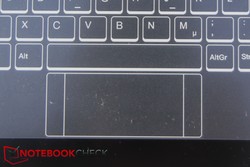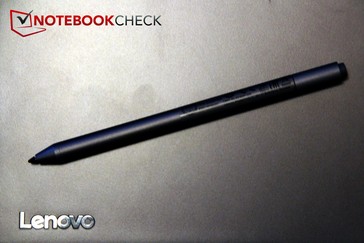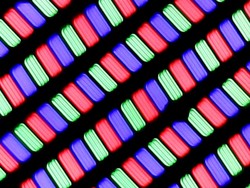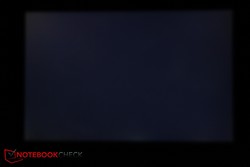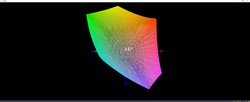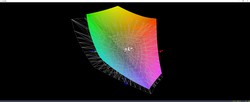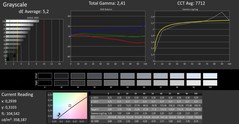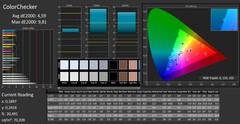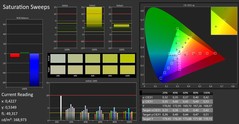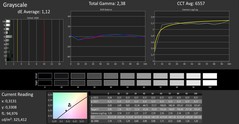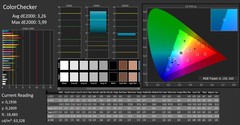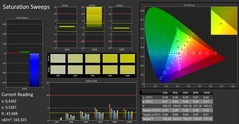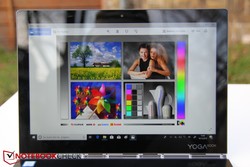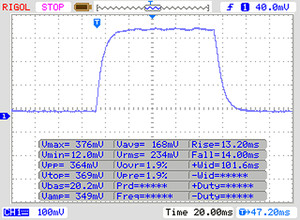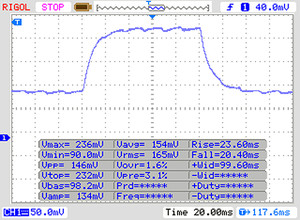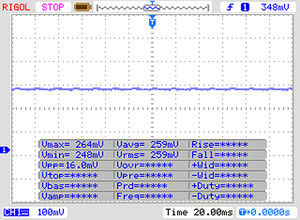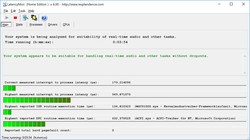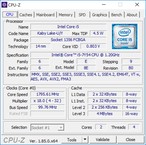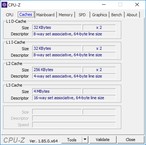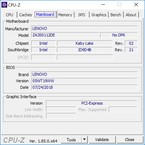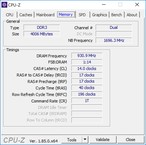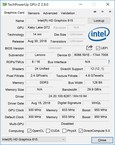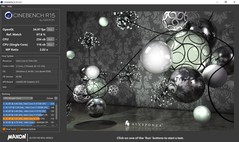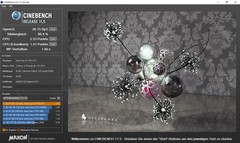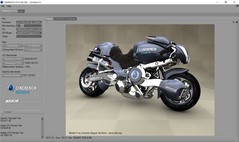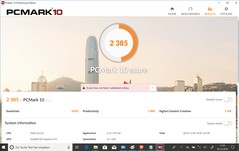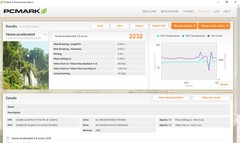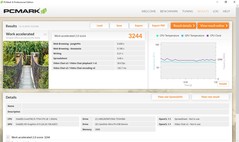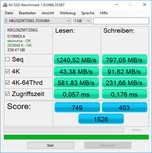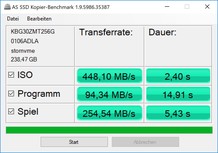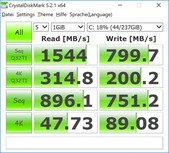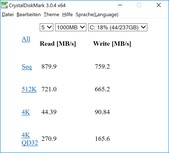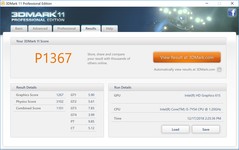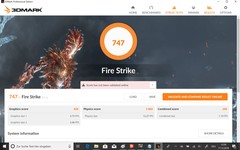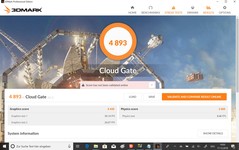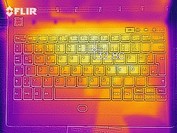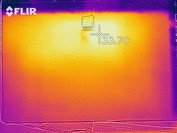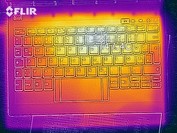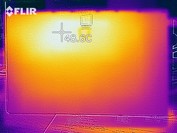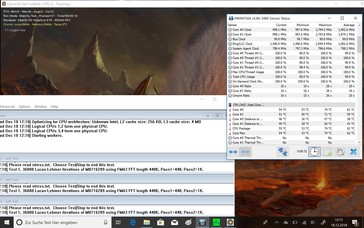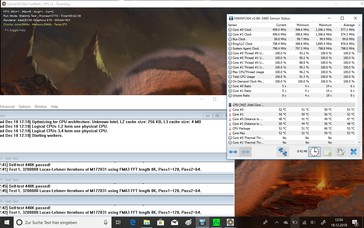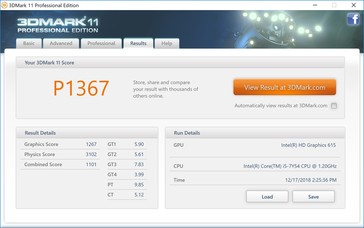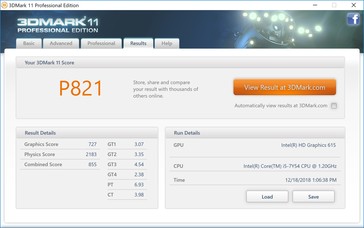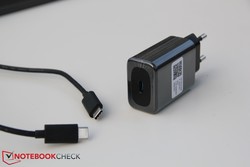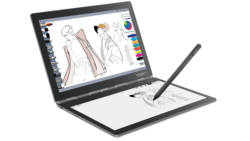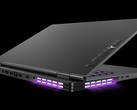Lenovo Yoga Book C930 (i5-7Y54, LTE, E-Ink) Convertible Review

The first Lenovo Yoga Book appeared in 2016 and attracted attention with its unique feature: Instead of a keyboard, the 360-degree convertible was equipped with a touch surface that covered the base unit. This could be used as a virtual keyboard or as a drawing board on which users could clip a piece of paper and take notes or draw with the included pen. The inputs would then be digitized.
The new Lenovo Yoga Book C930 - not to be confused with the Lenovo Yoga C930 (without the "Book") - has reinvented itself. Instead of the touch surface, we are now treated to a second screen - an E-Ink display with 1080p resolution. The paper holder has been removed. Instead, the E-Ink display can be used for typing, drawing, writing and even as an energy-efficient e-reader.
We at Notebookcheck encountered a very particular difficulty: This very special device is so unique that it can hardly be compared with any other notebook, tablet or convertible. Therefore, we chose both convertibles and tablets as our comparison devices. These include the Microsoft Surface Pro (2017), equipped with the slightly weaker m3 processor (also an option for the Yoga Book), the Huawei Matebook E and the Lenovo ThinkPad X1 Tablet Gen with the same CPU. Of course, we also compared the current test unit with its predecessor.
The only real weaknesses of the first Yoga Book were the small port selection as well as the slow eMMC storage. At least the latter has now been replaced by an NVMe SSD. We will discuss any other differences and whether the Yoga Book can be recommended in this review.
We do want to highlight another difference: The price. While the most expensive version of the predecessor cost around $600, Lenovo now charges $1050 for its Yoga Book. We would expect a lot of useful improvements and changes for this drastic increase in price. Currently, there is only one version available in the US. This is equipped with a Core i5 processor and a 128-GB SSD.
Case - Yoga 2-in-1
Like last time, Lenovo has chosen to cover its device with an aluminum/magnesium alloy. The non-slip surface offers a good grip - so much so that it almost feels "sticky". Overall, the device looks like it was sculpted from one mold. The display cover and bottom look equally thick. The missing physical keyboard means that the gap dimensions are very narrow. The two displays fold together almost seamlessly. The hinge is a little unusual and catches the eye. Apparently, it consists of 130 mechanical parts. Basically, it is made of tiny cogwheels that rotate in opposite directions and enable the convertible to open up to 360 degrees.
Although the material and simple exterior make the device appear very robust, the Yoga Book is sensitive to warping and the creaking noises it made during our attempts to bend it made us worry about the glass panels on the insides. We would avoid putting too much pressure on the case.
Of course, the Yoga can also be opened like a normal notebook, although this is made difficult by the narrow gap and the magnet that holds the two parts together. The knocking function is enough to impress any onlookers: You can open the display lid by knocking on it twice with your knuckles. The device then emits a quiet electronic noise and the convertible opens up enough for you to easily open it by hand. Alternatively, you can also press and hold the "volume down" button for the convertible to open up.
The insides consist of glass - both the upper touchscreen and the E-Ink display on the base unit have glass surfaces. Plastic borders are out. The base display has an integrated fingerprint reader in the top right corner. This should also work with wet fingers.
All our comparison devices have 12-inch screens, which is why they are all larger than the C930. In comparison to its predecessor, the new Yoga Book has grown slightly. Instead of 10.1 inches, it is now 10.8-inches large and 0.3 mm thicker. Although the competition might seem slimmer, this is not true, as the dimensions of the other convertibles were measured without their removable keyboard units. Therefore, the Yoga Book wins this category as well. The same can be said for its weight - only its predecessor was lighter. However, the weight differs depending on the equipment. Our test unit is positioned towards the top end of the spectrum.
Connectivity - stingy Lenovo Yoga Tablet
The limited port selection was one of the things we already criticized about the predecessor - and the same goes for its successor. Lenovo has made some changes, however. For example, the mini-HDMI port has been removed as well and the Micro-USB slot was replaced by two USB-C (Gen1) ports. Any external devices have to be connected via USB-C. As one of these ports will often be occupied by the power supply, there is only one connector available for devices such as a mouse, an external keyboard, monitors or any other (USB) devices. This is not ideal; the C930 really is more like a tablet in this regard. It does not even offer an audio jack, which means that headphones have to be connected via USB. Traditional laptop users will not be pleased with having only one or at the most two ports for all external devices. At least the C930 offers one USB slot more than its predecessor did.
The device does not come with any adapters either (USB-C-to-audio-jack or HDMI, for example). Apart from the USB-C ports, the device has a power button and a physical volume rocker.
SD Card Reader
There is an SD card reader available in the shape of an SD tray. However, the microSD card is placed in the same tray as the nano-SIM card (in the LTE version). The C930 has inherited this disadvantage of its predecessor. You will need to use the included pin to open the slot. This makes using the SD card overly complicated - particularly as the SIM card can apparently get damaged if it is removed during operation. To avoid this, turn off the device before inserting or removing a memory card.
The speed of the card slot is average according to our measurements with our reference card, the Toshiba Exceria Pro SDXC 64 GB UHS-II.
| SD Card Reader - maximum AS SSD Seq Read Test (1GB) | |
| Average of class Convertible (28.9 - 253, n=22, last 2 years) | |
| Lenovo ThinkPad X1 Tablet Gen 2 (Toshiba Exceria Pro SDXC 64 GB UHS-II) | |
| Microsoft Surface Pro (2017) m3 (Toshiba Exceria Pro M401 64 GB) | |
| Lenovo Yoga Book C930 YB-J912F (Toshiba Exceria Pro M501 microSDXC 64GB) | |
Communication
The Yoga Book does not have a LAN card or slot, which means that users are dependent on wireless connections. The device can connect via Wi-Fi, Bluetooth and, in some cases, LTE. The Wi-Fi speed is average. The Matebook from Huawei is slightly slower while the Surface from Microsoft is a little faster. Overall, the Yoga Book performs slightly above average when receiving data and is significantly better than average when sending data.
Security
The C930 has a fingerprint reader that works reliably and combines well with Windows Hello. However, the reader replaces the second camera that the predecessor was equipped with. The device also has an accelerometer, an ambient light sensor and a Hall sensor. TPM is also included thanks to the Intel processor.
Camera
The predecessor was equipped with a normal low-quality camera and an additional 8-MP main camera with auto focus. This was removed in favor of the new E-Ink display and fingerprint reader, which leaves us with the standard 2-MP low-quality camera for video calls.
Accessories
The device comes with a power supply and an input pen with 4096 levels of pressure as well as a battery. We also received a quick-start guide and a pin to open the SIM/SD tray.
Maintenance
The maintenance options are dealt with quickly - there simply are none. Again, the device is more similar to a tablet than a notebook.
Warranty
The manufacturer offers two-year warranty ex-works. Please see our Guarantees, Return policies and Warranties article for country-specific information.
Input Devices - an unconventional Lenovo
Keyboard
Instead of a physical keyboard, the Yoga Book has an E-Ink display with 1080p resolution on which a virtual keyboard can be displayed. There are two layout versions available - classic and modern. Of course, there is no normal feedback when hitting a key on the screen. Therefore, the panel vibrates and emits a clicking sound when a key is pressed. Both these feedback versions can be deactivated in the settings. The 11-inch design does not offer a lot of space for the keyboard. The modern layout offers slightly larger letter keys - instead, all the other keys (shift, Ctrl, etc.) are squeezed together at the edge.
According to Lenovo, inputs are evaluated and then optimized by artificial intelligence. Apparently, this should improve typing productivity by 22% compared to its predecessor. The tactile feedback makes it quite comfortable to write on the keyboard, although users might want to connect an external keyboard for writing long texts, particularly as the artificial vibrating and clicking sounds can get rather annoying after a while.
Another disadvantage of the E-Ink display is its missing backlight. The keyboard is very easy to read in daylight, but users might miss the lighting in dark surroundings. The predecessor was not equipped with an E-Ink display but had a touch surface that was illuminated.
Touchpad
The touchpad that is displayed with the keyboard is not very impressive. On the one hand, it is very small, which means that you quickly reach or even cross over the edges when gliding over it. As the keyboard is displayed on one (display) surface, you can easily miss the designated touchpad area and click one of the surrounding keys by mistake. This causes the tablet to vibrate and make a clicking sound.
The touchpad has to share its space with the space bar - at least when using the "modern" layout. This means that either the space bar or the touchpad is displayed depending on the situation. In practice, you have to click a circle below the space bar for the touchpad to appear. As soon as you press a random key, the touchpad switches back to being a space bar. This can be extremely bothersome when you want to copy/paste or use one of the special keys (for example for volume) but then want to continue using the touchpad, which then has to be reactivated manually. It would be more useful if the space bar didn't reappear automatically but also required a manual change.
When using the "classic" layout, the touchpad is always visible but is a lot smaller. Apart from this, the gliding properties and precision are quite good. Only the limited size and problem with the space bar spoil the potentially good properties of the touchpad.
Input with precision pen
You can choose what the E-Ink display should be used for at the top of the base screen, as it not only acts as a keyboard but also acts as an e-reader or for inputs using the pen. If you choose pen input, an empty graphics tablet with a few options is displayed. Here you can write or draw to your heart's desire, using either the included input pen, which recognizes 4096 levels of pressure and transmits data via Bluetooth, or using your fingers.
Unfortunately, the C930 also lacks some of the predecessor's functions. Particularly the possibility of drawing on paper is not officially supported anymore. This was one of the unique selling points of the 2016 model. Therefore, there is no paper holder and the pen no longer includes actual ink tips. Users are now limited to drawing directly on the E-Ink display or the touchscreen. The E-Ink display automatically straightens out writing after a few seconds. Nonetheless, the smooth glass surface is a lot more difficult to write on than paper.
We did not find any options for automatically transferring the drawing to a certain program. The E-Ink picture can only be copied into different software (for example image-processing software).
Touchscreen
The Yoga Book has a very large number of input options. Apart from the keyboard and touchpad and the input pen for the E-Ink display, the main screen also supports inputs via touch. Operating the main display with the finger works very well and the panel is very precise. Only the small display size combined with a high resolution can make inputs difficult as you have to be rather precise to click on the small buttons correctly. Usually this works very well anyway. If you need more precision, you can also use the included pen on the touchscreen.
Naturally, you can also draw on the touchscreen, but as the E-Ink display is available simultaneously and in a better position, drawing and writing on that is simply more comfortable.
Display - brilliant Yoga Book
We rightly praised the Full HD main screen of the predecessor; the current test unit tries to go another step further. Instead of Full HD we now have a resolution of 2560x1600 pixels. Unfortunately, the brightness of the reflective display has diminished slightly and gone from 362 cd/m² in the predecessor to 338 cd/m² in the current model. We did not measure the 400 cd/m² the manufacturer claims for this display. Instead, the panel has improved in other areas.
Particularly the black value and contrast of the current model have improved significantly. The Yoga Book C930 can even beat the Microsoft Surface Pro (2017) with a black value of 0.23 and a contrast ratio of 1526:1. There is hardly any backlight bleeding either.
| |||||||||||||||||||||||||
Brightness Distribution: 87 %
Center on Battery: 351 cd/m²
Contrast: 1526:1 (Black: 0.23 cd/m²)
ΔE ColorChecker Calman: 4.59 | ∀{0.5-29.43 Ø4.78}
calibrated: 3.26
ΔE Greyscale Calman: 5.2 | ∀{0.09-98 Ø5}
100% sRGB (Argyll 1.6.3 3D)
74% AdobeRGB 1998 (Argyll 1.6.3 3D)
83.2% AdobeRGB 1998 (Argyll 3D)
99.9% sRGB (Argyll 3D)
88.5% Display P3 (Argyll 3D)
Gamma: 2.41
CCT: 7712 K
| Lenovo Yoga Book C930 YB-J912F BOE 0765, , 2560x1660, 10.8" | Microsoft Surface Pro (2017) m3 LG Display LP123WQ112604, , 2736x1826, 12.3" | Huawei Matebook E Chi Mei CMN7801, , 2160x1440, 12" | Lenovo ThinkPad X1 Tablet Gen 2 LSN120QL01L01, , 2160x1440, 12" | Lenovo Yoga Book 2016 Windows 64GB LTE nicht auslesbar, Farbgamut: 70% lt. Hersteller, , 1920x1080, 10.1" | |
|---|---|---|---|---|---|
| Display | -13% | -3% | |||
| Display P3 Coverage (%) | 88.5 | 68.5 -23% | 84.9 -4% | ||
| sRGB Coverage (%) | 99.9 | 99.2 -1% | 99.8 0% | ||
| AdobeRGB 1998 Coverage (%) | 83.2 | 70.1 -16% | 79.9 -4% | ||
| Response Times | -1% | 30% | 25% | 8% | |
| Response Time Grey 50% / Grey 80% * (ms) | 43 ? | 42 ? 2% | 26 ? 40% | 28.4 ? 34% | 36 ? 16% |
| Response Time Black / White * (ms) | 27 ? | 28 ? -4% | 22 ? 19% | 22.8 ? 16% | 27 ? -0% |
| PWM Frequency (Hz) | 221.2 ? | ||||
| Screen | 10% | -2% | -14% | -2% | |
| Brightness middle (cd/m²) | 351 | 461 31% | 439 25% | 388.1 11% | 382 9% |
| Brightness (cd/m²) | 338 | 444 31% | 428 27% | 344 2% | 363 7% |
| Brightness Distribution (%) | 87 | 93 7% | 92 6% | 78 -10% | 83 -5% |
| Black Level * (cd/m²) | 0.23 | 0.34 -48% | 0.35 -52% | 0.39 -70% | 0.37 -61% |
| Contrast (:1) | 1526 | 1356 -11% | 1254 -18% | 995 -35% | 1032 -32% |
| Colorchecker dE 2000 * | 4.59 | 3.43 25% | 5.17 -13% | 4.6 -0% | 3.61 21% |
| Colorchecker dE 2000 max. * | 9.81 | 5.55 43% | 7.68 22% | 9.1 7% | 7.92 19% |
| Colorchecker dE 2000 calibrated * | 3.26 | ||||
| Greyscale dE 2000 * | 5.2 | 3.08 41% | 5.69 -9% | 6.1 -17% | 3.77 27% |
| Gamma | 2.41 91% | 3.03 73% | 2.42 91% | 2.07 106% | 2.43 91% |
| CCT | 7712 84% | 7014 93% | 7999 81% | 7104 91% | 6760 96% |
| Color Space (Percent of AdobeRGB 1998) (%) | 74 | 64 -14% | 71 -4% | 59 -20% | |
| Color Space (Percent of sRGB) (%) | 100 | 99 -1% | 100 0% | 91 -9% | |
| Total Average (Program / Settings) | -1% /
4% | 8% /
2% | 6% /
-8% | 3% /
0% |
* ... smaller is better
Overall, the screen does a good job despite its small size and offers great sharpness, good contrasts and rich colors, although the color deviation is slightly too high before calibration.
Nonetheless, the panel also offers good color-space coverage. sRGB is covered completely and we measured 74% coverage of AdobeRGB. Again, the C930 beats last year's Surface Pro.
Unlike its predecessor, the current model does not use PWM to regulate screen brightness. The response rates of the display are not brilliant but sufficient for the intended purposes.
The good black value and high contrast enable the use of the device outdoors. However, do expect some reflections due to the reflective display, which the manufacturer has chosen in order to offer stronger colors. It should still be possible to read screen content on cloudy days and when looking at the screen from a straight angle.
Display Response Times
| ↔ Response Time Black to White | ||
|---|---|---|
| 27 ms ... rise ↗ and fall ↘ combined | ↗ 13 ms rise | |
| ↘ 14 ms fall | ||
| The screen shows relatively slow response rates in our tests and may be too slow for gamers. In comparison, all tested devices range from 0.1 (minimum) to 240 (maximum) ms. » 66 % of all devices are better. This means that the measured response time is worse than the average of all tested devices (20.2 ms). | ||
| ↔ Response Time 50% Grey to 80% Grey | ||
| 43 ms ... rise ↗ and fall ↘ combined | ↗ 23 ms rise | |
| ↘ 20 ms fall | ||
| The screen shows slow response rates in our tests and will be unsatisfactory for gamers. In comparison, all tested devices range from 0.165 (minimum) to 636 (maximum) ms. » 70 % of all devices are better. This means that the measured response time is worse than the average of all tested devices (31.6 ms). | ||
Screen Flickering / PWM (Pulse-Width Modulation)
| Screen flickering / PWM not detected | |||
In comparison: 53 % of all tested devices do not use PWM to dim the display. If PWM was detected, an average of 8111 (minimum: 5 - maximum: 343500) Hz was measured. | |||
Typically for IPS screens, the viewing-angle stability is good. Particularly when looking at the screen from the sides, you should hardly notice any difference. There will be some color and brightness deviations when looking at the screen from above or below, but everything is still very easy to read.
Performance - Lenovo Convertible fulfills expectations
At the time of writing, there is only one configuration of the C930 available in the US. This is equipped with an Intel Core i5-7Y54 processor and a 128-GB SSD. The German test unit we are looking at today is equipped with the Intel Core i5-7Y54 but has a 256-GB SSD storage device and also supports LTE. None of the models have a dedicated graphics card and use the integrated Intel HD Graphics 615 instead.
This configuration positions the passively cooled Yoga Book in the upper range of tablet hardware. Compared to its predecessor, which was equipped with an Intel Atom CPU, Intel HD Graphics 400 and eMMC storage, its performance should still have improved significantly. Nonetheless, we cannot expect any miracles from the C930 in terms of performance. This test unit is not made for gaming, video-editing or similarly demanding tasks. It is suited to office applications, browsing the web and simple graphics.
We did not measure any latencies despite the not-so-powerful hardware, at least according to LatencyMon.
Processor
The processor has been given an update compared to its predecessor. Instead of the Intel Atom, we are now offered an Intel Core i5-7Y54. This is an energy-efficient dual-core CPU with Hyper-Threading, an internal GPU, the Intel HD Graphics 615, and clock rates from 1.2 to 3.2 GHz. The dual-core turbo should be 2.8 GHz. The processor is designed for tablets and passively cooled notebooks; low consumption rates and low heat production are favored over high performance. Therefore, we must not expect too much from the new Yoga Book.
The 30-minute Cinebench R15 loop illustrates the Yoga Book's performance nicely: At over 230 points in our Multi test, it reaches average results at first but, like so many others, cannot keep up the good work in the subsequent rounds. Due to increased temperatures, the CPU is throttled slightly and eventually settles down to around 200 points. The competition has a similar curve progression and the Surface also settles down to around 200 points. The Matebook manages to remain slightly more stable.
The Yoga Book does a good job in comparison to its competitors, but the upgrade was definitely necessary. Our test unit can beat its predecessor by 75% (Multi CPU) and 222% (Single CPU). The Surface and Matebook are about 10% faster, at least in the Multi CPU test. The results are very similar in the Cinebench R11.5 and Cinebench R10. Again, the Microsoft and Huawei devices are faster by about 10%. However, the Yoga Book takes the lead in the single test. Overall, the C930 can easily keep up with the other devices and offers the expected performance.
| Cinebench R10 | |
| Rendering Single CPUs 64Bit | |
| Average of class Convertible (n=1last 2 years) | |
| Lenovo Yoga Book C930 YB-J912F | |
| Average Intel Core i5-7Y54 (5545 - 6248, n=3) | |
| Microsoft Surface Pro (2017) m3 | |
| Rendering Multiple CPUs 64Bit | |
| Average of class Convertible (n=1last 2 years) | |
| Microsoft Surface Pro (2017) m3 | |
| Lenovo Yoga Book C930 YB-J912F | |
| Average Intel Core i5-7Y54 (8756 - 10501, n=3) | |
System Performance
The new Lenovo Yoga Book can also easily beat its predecessor in terms of system performance. However, it cannot quite keep up with the average system performance for convertibles. It is 3 - 6 points behind the expected performance for this CPU in all PCMark 10 tests. Depending on the test, it performs 10 - 50% below the average performance for convertibles. The Surface Pro always lies ahead by 5 - 30 points. The ThinkPad, also from Lenovo, has an advantage of 30 - 40% in PCMark 8 despite being equipped with the same processor. However, this device also has twice the RAM size and a faster SSD. The 4 GB of RAM in our test unit is almost the bottom limit of what appears appropriate for decent performance. Even some smartphones have larger working memories nowadays.
| PCMark 8 Home Score Accelerated v2 | 2232 points | |
| PCMark 8 Work Score Accelerated v2 | 3244 points | |
| PCMark 10 Score | 2385 points | |
Help | ||
Storage Device
The 256-GB SSD from Toshiba does a good job and cannot be blamed for the mediocre system performance results. Only the SSD in the ThinkPad is significantly better. The Surface Pro (2017)'s storage device is 10% slower than that of the Yoga Book and the SSD in the Matebook is actually positioned 30% below our test unit's. The eMMC storage device in our predecessor is 90% slower. Overall, the C930 has quite good results. You can find out more about the SSD in our SSD/HDD benchmark list.
| Lenovo Yoga Book C930 YB-J912F Toshiba KBG30ZMT256G | Microsoft Surface Pro (2017) m3 Samsung PM971 KUS020203M | Huawei Matebook E SanDisk SD8SN8U256G1027 | Lenovo ThinkPad X1 Tablet Gen 2 Samsung PM961 MZVLW256HEHP | Lenovo Yoga Book 2016 Windows 64GB LTE 64 GB eMMC Flash | Average Toshiba KBG30ZMT256G | |
|---|---|---|---|---|---|---|
| CrystalDiskMark 3.0 | -18% | -24% | 36% | -88% | 8% | |
| Read Seq (MB/s) | 880 | 691 -21% | 506 -42% | 1739 98% | 120.5 -86% | 844 ? -4% |
| Write Seq (MB/s) | 759 | 670 -12% | 461 -39% | 1259 66% | 34.39 -95% | 679 ? -11% |
| Read 512 (MB/s) | 721 | 261.1 -64% | 341.9 -53% | 698 -3% | 102.6 -86% | 653 ? -9% |
| Write 512 (MB/s) | 665 | 241 -64% | 294.7 -56% | 869 31% | 26.58 -96% | 583 ? -12% |
| Read 4k (MB/s) | 44.39 | 40.11 -10% | 32.46 -27% | 52.3 18% | 13.34 -70% | 48.1 ? 8% |
| Write 4k (MB/s) | 90.8 | 98.8 9% | 65.3 -28% | 120 32% | 11.56 -87% | 94.5 ? 4% |
| Read 4k QD32 (MB/s) | 270.9 | 301.8 11% | 381.8 41% | 247.9 -8% | 33.6 -88% | 410 ? 51% |
| Write 4k QD32 (MB/s) | 165.6 | 172 4% | 184.4 11% | 259 56% | 13.79 -92% | 230 ? 39% |
| AS SSD | -5% | -39% | 106% | -93% | 1% | |
| Seq Read (MB/s) | 1241 | 1226 -1% | 489.8 -61% | 2130 72% | 128.4 -90% | 1279 ? 3% |
| Seq Write (MB/s) | 797 | 514 -36% | 202.1 -75% | 887 11% | 28.76 -96% | 766 ? -4% |
| 4K Read (MB/s) | 43.38 | 38.82 -11% | 30.43 -30% | 44.11 2% | 45.5 ? 5% | |
| 4K Write (MB/s) | 91.6 | 88.6 -3% | 60.5 -34% | 125.8 37% | 91 ? -1% | |
| 4K-64 Read (MB/s) | 582 | 891 53% | 359.7 -38% | 2208 279% | 613 ? 5% | |
| 4K-64 Write (MB/s) | 231.7 | 144.3 -38% | 149.6 -35% | 598 158% | 273 ? 18% | |
| Access Time Read * (ms) | 0.057 | 0.074 -30% | 0.107 -88% | 0.054 5% | 0.1095 ? -92% | |
| Access Time Write * (ms) | 0.176 | 0.04 77% | 0.075 57% | 0.028 84% | 0.202 ? -15% | |
| Score Read (Points) | 749 | 1053 41% | 439 -41% | 2465 229% | 786 ? 5% | |
| Score Write (Points) | 403 | 284 -30% | 230 -43% | 812 101% | 441 ? 9% | |
| Score Total (Points) | 1526 | 1847 21% | 890 -42% | 4470 193% | 1616 ? 6% | |
| Copy ISO MB/s (MB/s) | 448.1 | 173.2 -61% | 694 55% | 490 ? 9% | ||
| Copy Program MB/s (MB/s) | 94.3 | 83.8 -11% | 320.8 240% | 129.9 ? 38% | ||
| Copy Game MB/s (MB/s) | 254.5 | 140.7 -45% | 302.8 19% | 330 ? 30% | ||
| Total Average (Program / Settings) | -12% /
-10% | -32% /
-33% | 71% /
81% | -91% /
-89% | 5% /
4% |
* ... smaller is better
Graphics Performance
The Lenovo Yoga Book only has an integrated graphics card. The Intel HD Graphics 615 is more than two years old and uses the system RAM as it does not have its own dedicated VRAM. The convertible is not intended for gaming but can display 4K/H.265 videos smoothly.
The Yoga Book did a good job in our 3DMark tests. It was a whole 200% faster than its predecessor in 3DMark 11 and manages first place in our comparison table. However, only about 3% lies between the C930 and its rivals. The largest differences appear in the Fire Strike test. The Lenovo convertible is at the top while the Surface Pro and ThinkPad are behind by about 10%. Again, the C930 performs just as we would have expected from its hardware configuration.
Luckily the performance of the Yoga Book does not drop in battery mode. That is very good news.
| 3DMark 11 Performance | 1367 points | |
| 3DMark Cloud Gate Standard Score | 4893 points | |
| 3DMark Fire Strike Score | 747 points | |
Help | ||
Gaming Performance
Despite the relatively new CPU and better (internal) graphics card, the Yoga Book is quite unsuitable for gaming. Even undemanding games such as Rocket League can hardly be displayed smoothly. You may be able to play some older games in low resolution and low details. Skyrim from 2011, for example, can be played at around 35 fps. Apart from that, the gaming possibilities are limited to very simple titles such as Candy Crush (preinstalled) or Farmville 2 from the Windows Store.
| The Witcher 3 | |
| 1024x768 The Witcher 3 low | |
| Average of class Convertible (22 - 299, n=20, last 2 years) | |
| Average Intel HD Graphics 615 (n=1) | |
| 1366x768 The Witcher 3 medium | |
| Average of class Convertible (39 - 210, n=16, last 2 years) | |
| 1920x1080 The Witcher 3 high | |
| Average of class Convertible (21.4 - 120.1, n=19, last 2 years) | |
| 1920x1080 The Witcher 3 ultra | |
| Average of class Convertible (11 - 101, n=21, last 2 years) | |
| low | med. | high | ultra | |
|---|---|---|---|---|
| The Elder Scrolls V: Skyrim (2011) | 35.1 | 18 | 7.9 | |
| Tomb Raider (2013) | 61.4 | 28.9 | 18.4 | |
| Rocket League (2017) | 26.4 |
Emissions - calm Yoga Laptop
System Noise
As the convertible is passively cooled and does not have a cooling fan, there is no system noise. We did not hear any bothersome electronic noise coming from the device either.
Temperature
The surface temperature remains reasonably low. Although the C930 heats up a little more than its predecessor did while idling and under load, these small differences in temperature are actually very good considering the great performance increase. As the convertible will hardly have to deal with heavy loads, it should not heat up very often. Under normal load, you can expect surface temperatures around 28 °C. Only in extreme situations might the temperature rise to around 44 °C, particularly in the right area near the screen. The wrist rest remains comfortably cool at all times.
The Surface Pro (2017) and the ThinkPad both heat up more while idling. Under load, the Surface is slightly cooler while the ThinkPad reaches higher temperatures. The Huawei Matebook and the predecessor both remain cooler by about 10%.
| Lenovo Yoga Book C930 YB-J912F HD Graphics 615, i5-7Y54, Toshiba KBG30ZMT256G | Microsoft Surface Pro (2017) m3 HD Graphics 615, m3-7Y30, Samsung PM971 KUS020203M | Huawei Matebook E HD Graphics 615, i5-7Y54, SanDisk SD8SN8U256G1027 | Lenovo ThinkPad X1 Tablet Gen 2 HD Graphics 615, i5-7Y54, Samsung PM961 MZVLW256HEHP | Lenovo Yoga Book 2016 Windows 64GB LTE HD Graphics 400 (Braswell), Z8550, 64 GB eMMC Flash | |
|---|---|---|---|---|---|
| Heat | -9% | 11% | -10% | 10% | |
| Maximum Upper Side * (°C) | 42 | 40.5 4% | 36.3 14% | 47.2 -12% | 34 19% |
| Maximum Bottom * (°C) | 43.8 | 40.6 7% | 37.9 13% | 49.8 -14% | 40.2 8% |
| Idle Upper Side * (°C) | 27.7 | 37.8 -36% | 26.2 5% | 30.8 -11% | 25.7 7% |
| Idle Bottom * (°C) | 28.7 | 32 -11% | 25.6 11% | 29.2 -2% | 27.1 6% |
* ... smaller is better
The convertible is not intended for high-stress situations. Nonetheless, we decided to run our stress test to get an idea of the device's behavior in terms of temperature and clock rate under load. As soon as Prime95 and FurMark are turned on, the processor falls below its base clock rate of 1.2 GHz. At first it clocks at around 1 GHz but then drops further. After 10 - 15 minutes, the CPU clock rate settles down at around 500 MHz. There would actually still be room for more as the core temperatures lie around 50 °C throughout the test. The CPU suffers from strong throttling, which makes it basically impossible to execute complex applications. But this should not be expected from a tablet notebook anyway. The extremely thin case and passive cooling mean that Lenovo has to limit its performance quite quickly as it is difficult to transfer heat out of the small device.
(±) The maximum temperature on the upper side is 42 °C / 108 F, compared to the average of 35.4 °C / 96 F, ranging from 19.6 to 60 °C for the class Convertible.
(±) The bottom heats up to a maximum of 43.8 °C / 111 F, compared to the average of 36.8 °C / 98 F
(+) In idle usage, the average temperature for the upper side is 26.3 °C / 79 F, compared to the device average of 30.3 °C / 87 F.
(+) The palmrests and touchpad are reaching skin temperature as a maximum (33.4 °C / 92.1 F) and are therefore not hot.
(-) The average temperature of the palmrest area of similar devices was 27.9 °C / 82.2 F (-5.5 °C / -9.9 F).
Speakers
Nobody can expect excellent sound with strong, deep bass tones from a tablet convertible. At least the stereo speakers produce a relatively balanced sound, although it is a little on the quiet side. We have heard a lot worse. Nonetheless, we would recommend using headphones when watching videos. Unfortunately, the Yoga Book C930 does not have a headphone jack. Users will have to purchase a USB-C-to-audio-jack adapter, as this is not included either. This also takes up one of the two available USB ports.
Lenovo Yoga Book C930 YB-J912F audio analysis
(-) | not very loud speakers (67.3 dB)
Bass 100 - 315 Hz
(±) | reduced bass - on average 11.4% lower than median
(±) | linearity of bass is average (8.1% delta to prev. frequency)
Mids 400 - 2000 Hz
(±) | higher mids - on average 5.2% higher than median
(+) | mids are linear (3.8% delta to prev. frequency)
Highs 2 - 16 kHz
(+) | balanced highs - only 4.6% away from median
(±) | linearity of highs is average (8.3% delta to prev. frequency)
Overall 100 - 16.000 Hz
(±) | linearity of overall sound is average (20.9% difference to median)
Compared to same class
» 55% of all tested devices in this class were better, 10% similar, 35% worse
» The best had a delta of 6%, average was 20%, worst was 57%
Compared to all devices tested
» 56% of all tested devices were better, 8% similar, 36% worse
» The best had a delta of 4%, average was 24%, worst was 134%
Apple MacBook 12 (Early 2016) 1.1 GHz audio analysis
(+) | speakers can play relatively loud (83.6 dB)
Bass 100 - 315 Hz
(±) | reduced bass - on average 11.3% lower than median
(±) | linearity of bass is average (14.2% delta to prev. frequency)
Mids 400 - 2000 Hz
(+) | balanced mids - only 2.4% away from median
(+) | mids are linear (5.5% delta to prev. frequency)
Highs 2 - 16 kHz
(+) | balanced highs - only 2% away from median
(+) | highs are linear (4.5% delta to prev. frequency)
Overall 100 - 16.000 Hz
(+) | overall sound is linear (10.2% difference to median)
Compared to same class
» 7% of all tested devices in this class were better, 2% similar, 91% worse
» The best had a delta of 5%, average was 18%, worst was 53%
Compared to all devices tested
» 4% of all tested devices were better, 1% similar, 94% worse
» The best had a delta of 4%, average was 24%, worst was 134%
Energy Management - weak Lenovo
Power Consumption
Considering the significantly increased performance, we are not surprised that the Yoga Book consumes noticeably more power than its predecessor from 2016. The latter consumed about 44% less energy. Still, the power consumption of our test unit is not that high and can be compared to those of the Surface Pro and Matebook. The ThinkPad is about 9% more efficient.
The maximum consumption we measured under heavy load was 30.5 watts. The power supply only offers 27 watts (3A, 9V) which means that the convertible would actually consume additional power from the battery in such a case. However, this represents an extreme scenario that should not occur during everyday use.
| Off / Standby | |
| Idle | |
| Load |
|
Key:
min: | |
| Lenovo Yoga Book C930 YB-J912F i5-7Y54, HD Graphics 615, Toshiba KBG30ZMT256G, IPS, 2560x1660, 10.8" | Lenovo Yoga Book 2016 Windows 64GB LTE Z8550, HD Graphics 400 (Braswell), 64 GB eMMC Flash, IPS , 1920x1080, 10.1" | Microsoft Surface Pro (2017) m3 m3-7Y30, HD Graphics 615, Samsung PM971 KUS020203M, IPS, 2736x1826, 12.3" | Huawei Matebook E i5-7Y54, HD Graphics 615, SanDisk SD8SN8U256G1027, IPS, 2160x1440, 12" | Lenovo ThinkPad X1 Tablet Gen 2 i5-7Y54, HD Graphics 615, Samsung PM961 MZVLW256HEHP, IPS, 2160x1440, 12" | Average Intel HD Graphics 615 | Average of class Convertible | |
|---|---|---|---|---|---|---|---|
| Power Consumption | 44% | -2% | 1% | 9% | 7% | -54% | |
| Idle Minimum * (Watt) | 5.3 | 2 62% | 3.1 42% | 3.9 26% | 5 6% | 4.12 ? 22% | 4.43 ? 16% |
| Idle Average * (Watt) | 6.9 | 4.6 33% | 8.8 -28% | 8.8 -28% | 6.3 9% | 7.02 ? -2% | 7.38 ? -7% |
| Idle Maximum * (Watt) | 7.4 | 5.7 23% | 9.8 -32% | 8.9 -20% | 7.8 -5% | 7.89 ? -7% | 9.78 ? -32% |
| Load Average * (Watt) | 19.7 | 11.5 42% | 22.7 -15% | 20 -2% | 19.5 1% | 20 ? -2% | 45 ? -128% |
| Load Maximum * (Watt) | 30.5 | 11.5 62% | 23.6 23% | 21.8 29% | 19.6 36% | 23.8 ? 22% | 67.1 ? -120% |
* ... smaller is better
Battery Runtimes
We measure the maximum battery runtime with Battery Eater. The display brightness was set to minimum and all communication modules were turned off for this test. The Readers Test simulates low load. In this scenario, the Lenovo managed about 11 hours and 30 minutes.
Our more practical test looks at the battery runtime while browsing the web via Wi-Fi. The brightness is slightly reduced, Wi-Fi is turned on and we use a script to load different webpages every minute, occasionally playing YouTube videos. Our test unit managed a battery runtime of 6 hours and 20 minutes here.
In our video test, we turn on flight mode and again reduce the brightness slightly. The video is played in a loop with the sound turned off. The Yoga Book turned off after about 3 hours in this test.
In order to really tax the battery, we turned on all power guzzlers such as Wi-Fi and Bluetooth, maximized the brightness and simulated high loads with Battery Eater Classic. The Yoga Book's minimum runtime lay at around 1.5 hours.
Compared to our competitors, the battery runtimes are average at best. The battery requires over 3 hours to recharge fully.
| Lenovo Yoga Book C930 YB-J912F i5-7Y54, HD Graphics 615, 36 Wh | Microsoft Surface Pro (2017) m3 m3-7Y30, HD Graphics 615, 45 Wh | Huawei Matebook E i5-7Y54, HD Graphics 615, 33.7 Wh | Lenovo ThinkPad X1 Tablet Gen 2 i5-7Y54, HD Graphics 615, 37 Wh | Lenovo Yoga Book 2016 Windows 64GB LTE Z8550, HD Graphics 400 (Braswell), 32 Wh | Average of class Convertible | |
|---|---|---|---|---|---|---|
| Battery runtime | 53% | 8% | -1% | 50% | 74% | |
| Reader / Idle (h) | 11.5 | 15.6 36% | 11 -4% | 19.2 67% | 25.1 ? 118% | |
| H.264 (h) | 6.6 | 11.1 68% | 15.2 ? 130% | |||
| WiFi v1.3 (h) | 6.3 | 11.4 81% | 6.8 8% | 7.4 17% | 8.3 32% | 11.2 ? 78% |
| Load (h) | 2.6 | 3.3 27% | 2.2 -15% | 1.793 ? -31% |
Verdict - versatile Windows Book
Pros
Cons
The new Yoga Book features an E-Ink display that makes it very unique. Its biggest advantage is its versatility. It is extremely small and light and can be used for drawing on, as a notebook or tablet or as an e-reader. But of course this flexibility also requires some compromises.
For example, the keyboard is not suitable for frequent typers and does not have backlighting. The meager port selection could also be bothersome for traditional notebook users. If an e-reader is all you need, you will probably find even lighter devices.
The Lenovo Book is directed at people who would like to combine all its functions (touch, pen, e-reader, etc.) into one device. Users who are looking for a normal laptop might be happier with a different device.
Nonetheless, it is surprising to see how well Lenovo has managed to combine all these functions into such a light device. Its design and cool functions (knocking) turn the Book C930 into a real eye-catcher. As we do not have a separate category for E-Ink displays in our evaluation system, we manually added two points to the result.
Some users might consider the price to be a further disadvantage. With a starting price of $1050, the device costs about double as much as its predecessor did. Apart from the many improvements, some functions have also disappeared. The possibility to digitalize images from paper is no longer available. The better main camera is also missing and, unfortunately, the battery runtime is significantly shorter than that of its predecessor. Instead, performance has increased dramatically and the display is better as well. Last but not least: Currently the device has no real competitors.
Lenovo Yoga Book C930 YB-J912F
- 12/22/2018 v6 (old)
Christian Hintze





